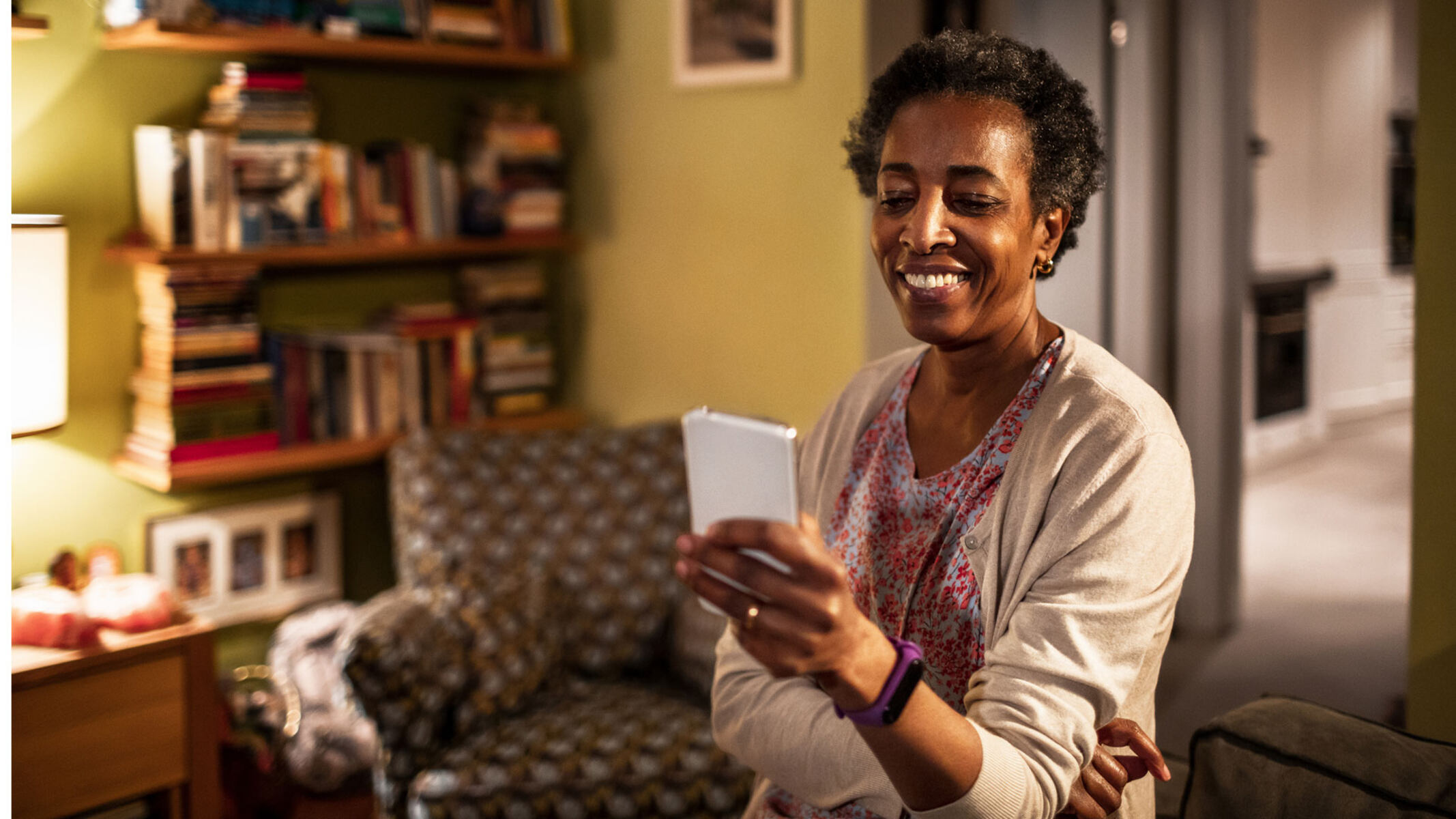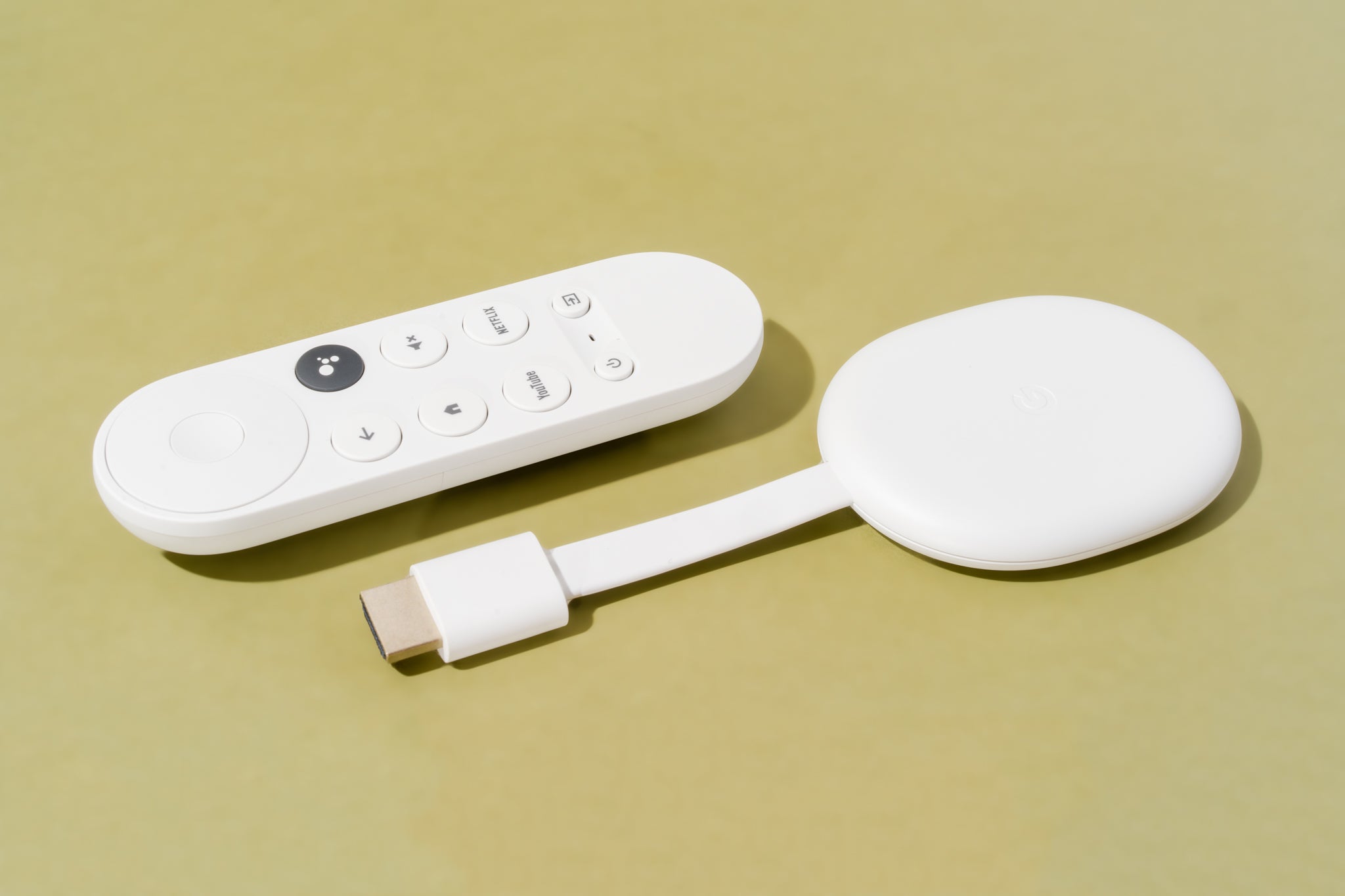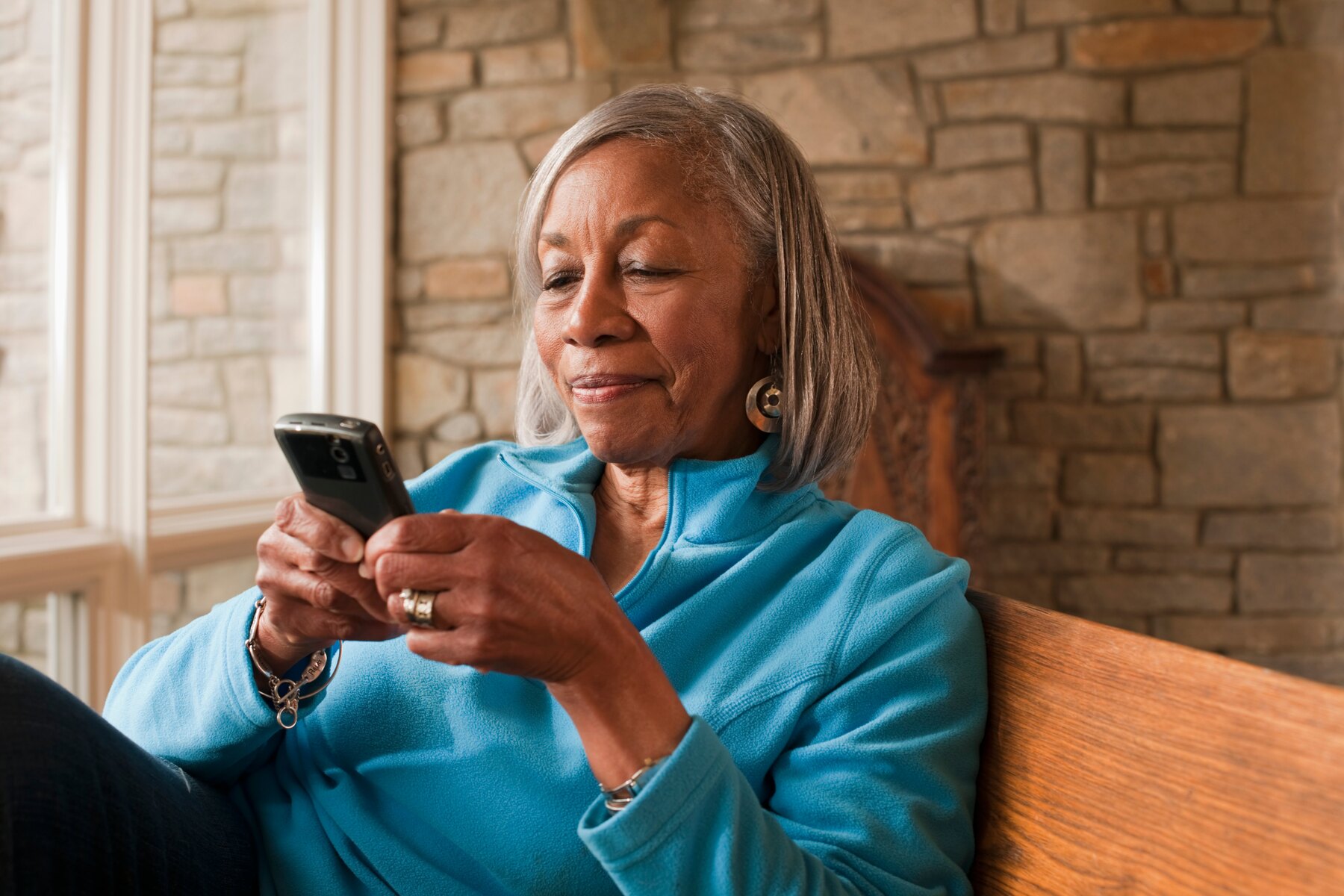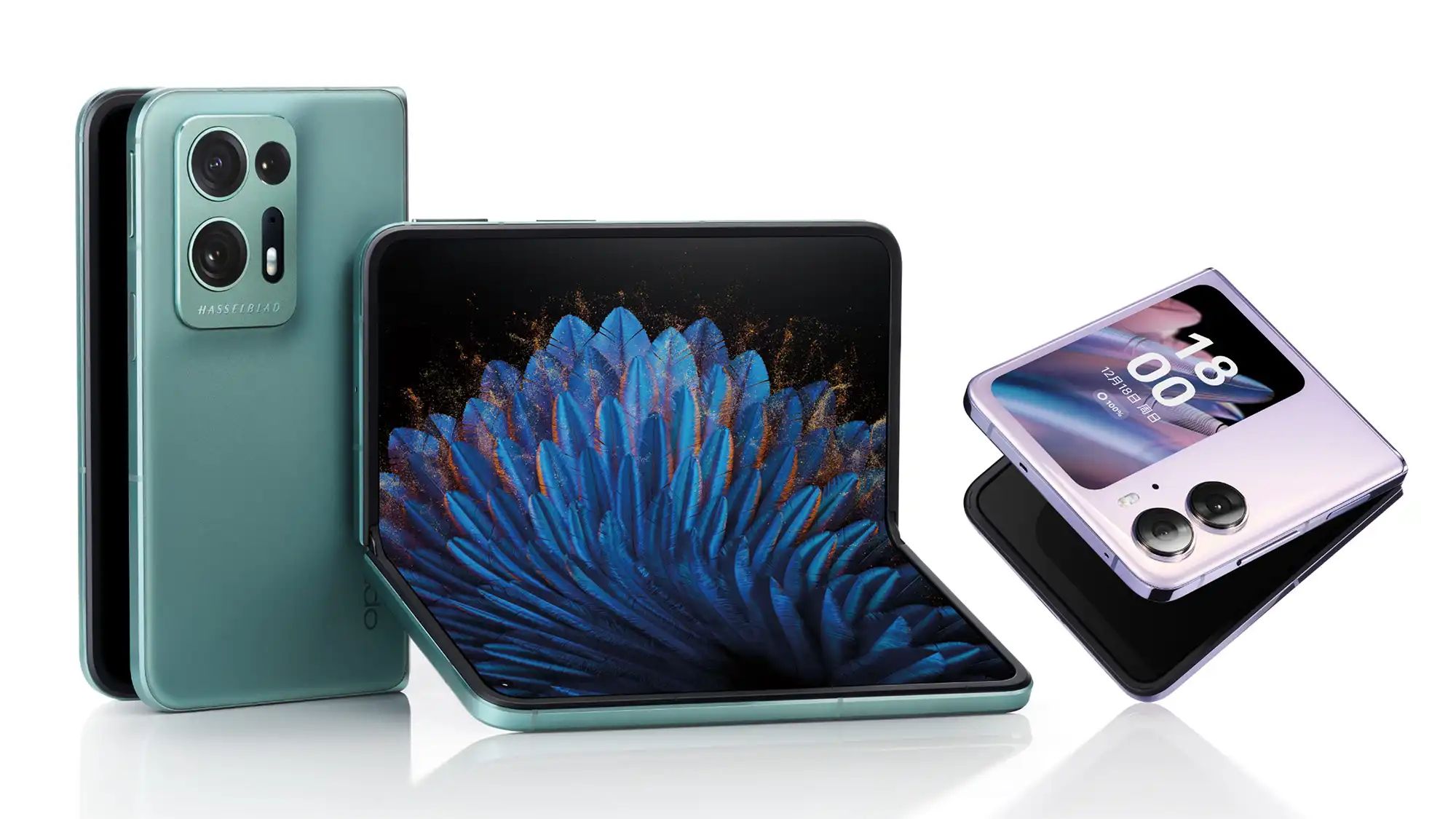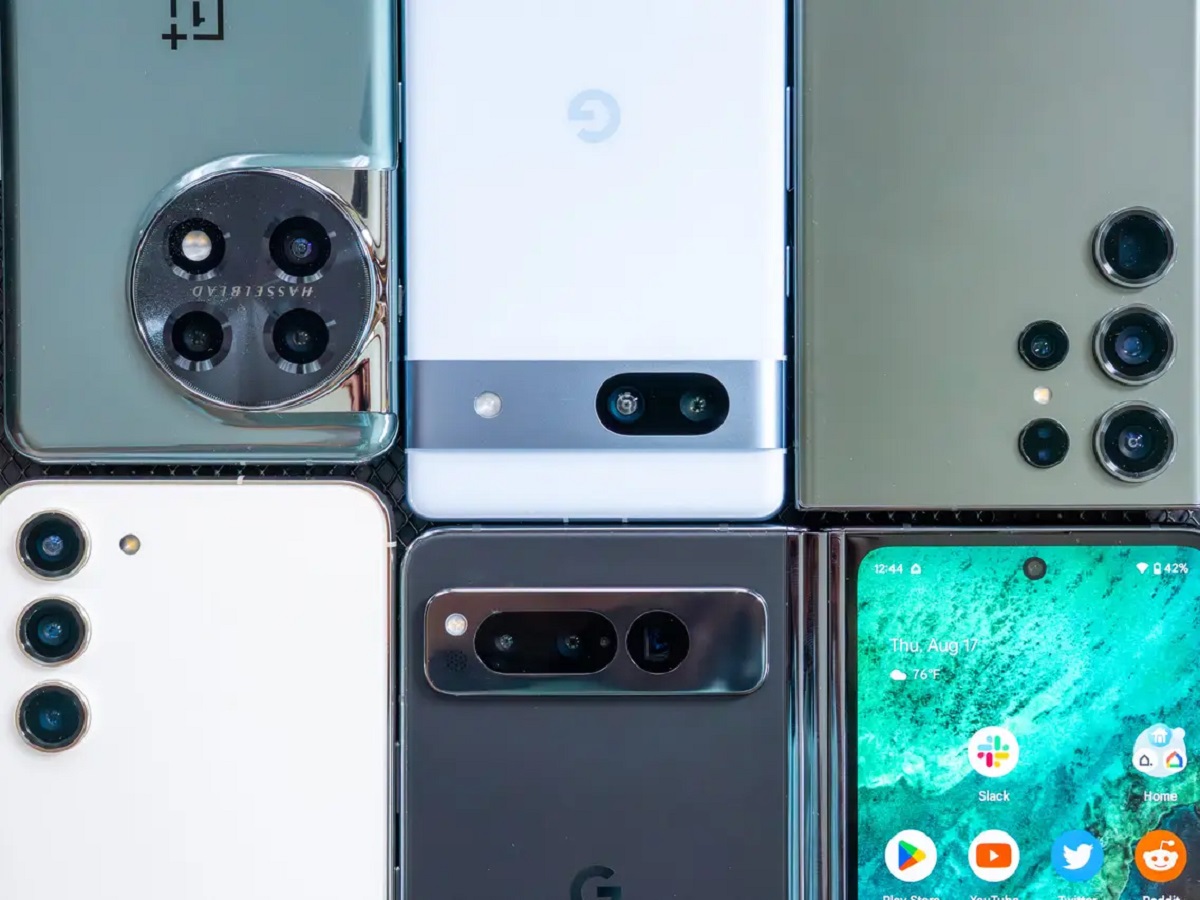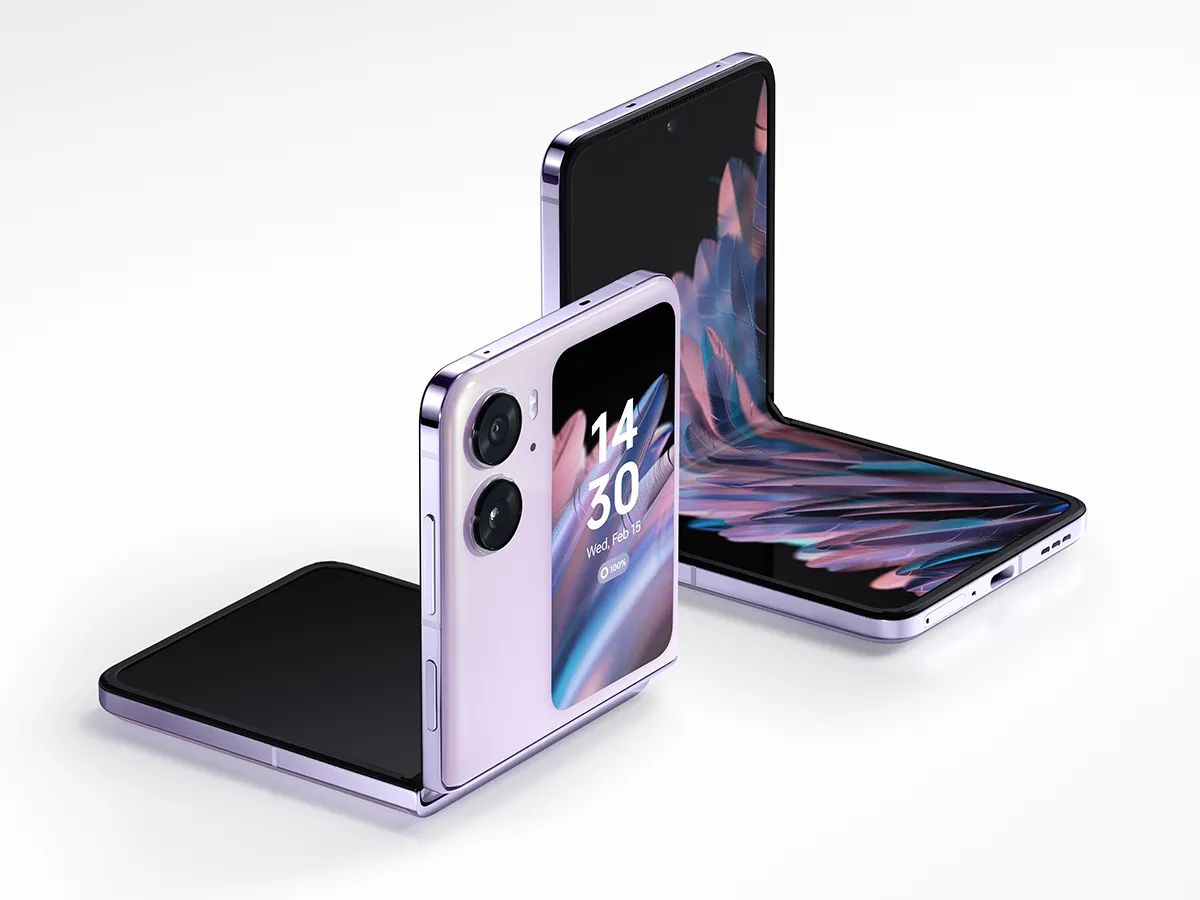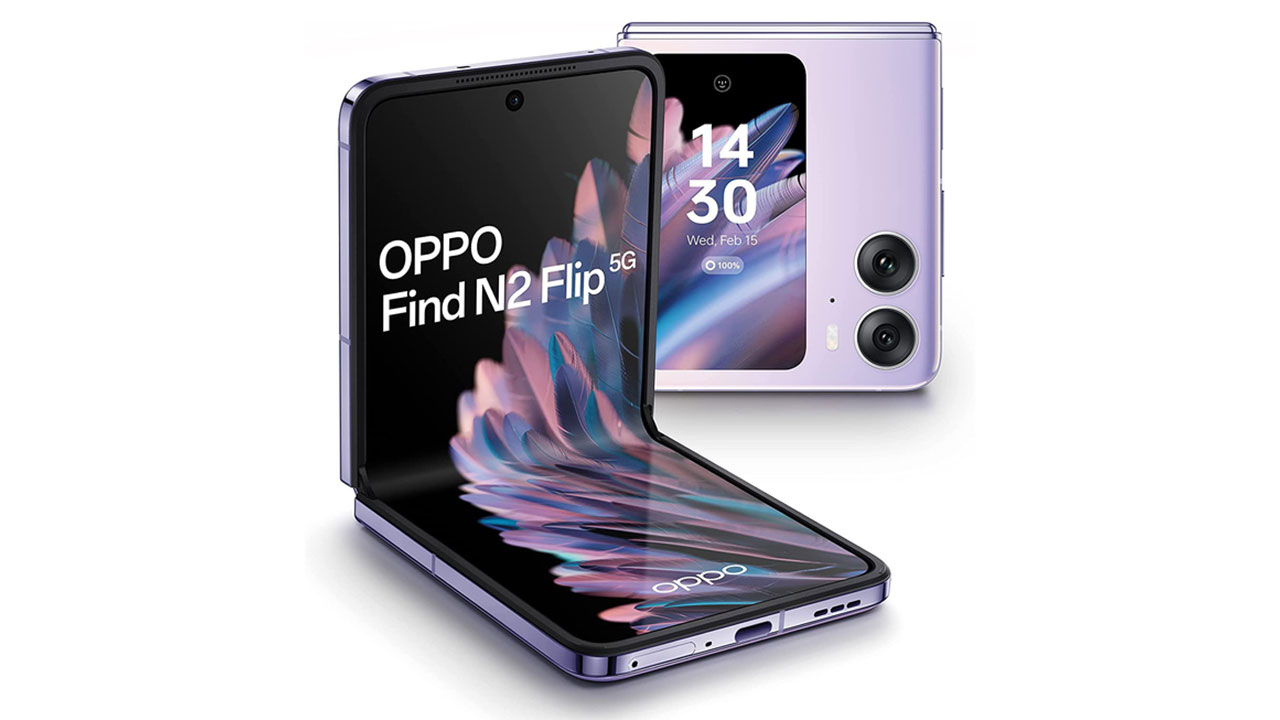Introduction
Choosing the right smartphone can be a daunting task, especially for seniors who may not be as tech-savvy as younger generations. However, it’s important to note that there are numerous smartphones on the market today that are specifically designed with seniors in mind. These smartphones offer a simplified interface, larger buttons, and other features that make them easier to use and navigate.
In this article, we will explore the key factors to consider when choosing a smartphone for seniors. From large displays and simplified interfaces to physical buttons and emergency features, we will discuss the features that make a smartphone user-friendly for seniors. Whether you’re a senior looking for an easy-to-use smartphone or you’re helping an older loved one find the perfect device, this guide will help you make an informed decision.
It’s important to note that the term “senior” can encompass a wide range of ages and abilities. Some seniors may have extensive experience with smartphones and are looking for more advanced features, while others may be completely new to the world of mobile devices. In this article, we will focus on smartphones that offer a user-friendly experience for seniors of varying technological knowledge and abilities.
When considering a smartphone for seniors, the goal is to find a device that strikes a balance between simplicity and functionality. The smartphone should be easy to use and navigate, but it should also offer the necessary features and capabilities to enhance the daily life of the user. Whether it’s staying connected with loved ones, accessing important information, or capturing precious memories, a smartphone can greatly improve the quality of life for seniors.
Now, let’s dive into the key features to look for when choosing the easiest smartphone for seniors to use.
Large Display
One of the most important considerations when choosing a smartphone for seniors is the size of the display. A large, clear display makes it easier for seniors with visual impairments or dexterity issues to read texts, navigate the interface, and view pictures and videos.
Look for a smartphone with a screen size of at least 5 inches, as this will provide ample space for icons, text, and images. Additionally, opt for a device with a high resolution and good color reproduction to ensure that the screen is sharp and vibrant.
Another factor to consider is the brightness level of the display. Seniors who have difficulty seeing in bright light may benefit from a smartphone with a brightness adjustment feature. This will allow them to adjust the screen brightness according to their preferences and the lighting conditions.
Furthermore, some smartphones offer features to enhance readability, such as adjustable font sizes, bold text options, and high contrast modes. These features can greatly assist seniors with visual impairments and make it easier for them to interact with the device.
It’s also worth noting that smartphones with larger displays often have wider viewing angles, which means that the screen can be easily viewed from different angles without distorting the image. This is particularly useful for seniors who may have difficulty holding the device directly in front of them at all times.
In summary, a smartphone with a large, clear display is essential for seniors. It improves readability, enhances user experience, and ensures that seniors can fully enjoy the features and functions of their device. When assessing smartphones, consider the screen size, resolution, brightness capability, and readability features to find the perfect option for seniors with varying visual needs.
Simplified Interface
For seniors who may not be familiar with smartphones or have limited technological knowledge, a simplified user interface is essential. A cluttered and complex interface can be overwhelming and make it difficult for seniors to navigate the device. Look for a smartphone that offers a simplified interface specifically designed for ease of use.
One key feature to consider is a user-friendly home screen. The home screen should have clear, easy-to-understand icons for commonly used functions such as calling, messaging, and accessing apps. Additionally, the option to customize the home screen layout can be beneficial, allowing seniors to prioritize the apps and features they use most frequently.
Another feature to look for is a simple and intuitive menu system. The menu should be organized in a logical manner, with clearly labeled categories and sub-categories. Avoid smartphones that have complex nested menus or hidden settings, as these can be frustrating and confusing for seniors.
Large and easy-to-press buttons are another crucial aspect of a simplified interface. Seniors with dexterity issues may struggle with small, tightly packed buttons. Look for a smartphone that has well-spaced buttons, both on the screen and around the device. Physical buttons can be particularly beneficial for seniors who prefer the tactile feedback and find it easier to press physical buttons compared to touchscreen options.
In addition, consider smartphones that offer guided tutorials and built-in help features. These can provide step-by-step instructions and explanations on how to perform common tasks or troubleshoot issues. Having access to clear and concise instructions can significantly reduce frustration and help seniors become more confident in using their smartphones.
Finally, it’s important to choose a smartphone that offers customizable accessibility settings. This includes options to adjust font sizes, enable high contrast modes, and activate speech-to-text or text-to-speech features. These accessibility settings can greatly assist seniors with sight or hearing impairments, ensuring that they can use the smartphone comfortably and independently.
Overall, a simplified interface is crucial for seniors to easily navigate and use their smartphones. Look for a device with a user-friendly home screen, intuitive menu system, large and easy-to-press buttons, guided tutorials, and customizable accessibility settings. By considering these factors, you can ensure that the smartphone provides a seamless and enjoyable user experience for seniors.
Physical Buttons
For seniors who prefer a more tactile experience and have difficulty using touchscreen interfaces, smartphones with physical buttons can be an excellent choice. Physical buttons offer a tangible and familiar way to interact with the device, making it easier for seniors with dexterity issues or limited fine motor skills to navigate and use their smartphones.
One of the key physical buttons to consider is the power button. It should be easy to locate and press, preferably on the side or top of the device. This allows seniors to quickly turn the smartphone on and off without any hassle.
Another important physical button is the volume rocker. Seniors may want to adjust the volume of calls, notifications, and media without having to navigate through menus or use on-screen sliders. Having easily accessible volume buttons simplifies this task and provides more control over the sound levels on the smartphone.
Some smartphones also offer dedicated buttons for functions like the camera or emergency calls. These buttons can be of great value to seniors who want quick access to essential features. For example, an emergency button can be programmed to call a preset emergency contact, giving seniors a sense of security and peace of mind.
Additionally, physical buttons for navigation can be beneficial. A well-defined home button, back button, and/or menu button can make it easier for seniors to navigate through apps and menus. These buttons provide a familiar and consistent interface, reducing confusion and simplifying the overall user experience.
Finally, it’s important to consider the overall design and build quality of the smartphone. Make sure that the physical buttons are durable and responsive, as seniors may require more pressure or have difficulty with excessive friction. Additionally, check for a comfortable grip and ergonomic design that allows seniors to hold the smartphone securely and comfortably.
To summarize, smartphones with physical buttons offer a tactile and user-friendly experience for seniors. Consider the location and accessibility of buttons such as the power button, volume rocker, camera or emergency buttons, and navigation buttons. Additionally, ensure that the buttons are durable, responsive, and comfortable to use. By choosing a smartphone with physical buttons, seniors can enjoy a more familiar and accessible way to interact with their devices.
Hearing Aid Compatibility
For seniors with hearing impairments or those who wear hearing aids, it is crucial to choose a smartphone that is compatible with their devices. Hearing aid compatibility allows for better sound quality and reduces interference when using the smartphone.
When looking for a smartphone, check if it is rated for compatibility with hearing aids. Look for the rating system, such as the M-rating (for microphone compatibility) and T-rating (for telecoil compatibility). These ratings indicate how well the smartphone can work with different types of hearing aids.
One important feature to consider is Bluetooth connectivity. Bluetooth-enabled smartphones can connect seamlessly to Bluetooth-enabled hearing aids, allowing for direct audio streaming. This eliminates the need for additional accessories or cables and provides a more convenient and comfortable listening experience.
Another feature to look for is a customizable sound profile. Some smartphones offer equalizer settings or audio enhancement features that allow users to fine-tune the sound quality to their specific hearing needs. This can greatly improve the clarity and volume of phone calls, media playback, and notifications.
Additionally, consider the placement and quality of the speakers on the smartphone. Look for devices with loud and clear speakers that are positioned in a way that directs sound towards the user. This ensures that seniors can hear phone calls, alarms, and notifications without straining or adjusting their hearing aids excessively.
It’s also worth noting that some smartphones have compatibility with assistive listening systems or FM transmitters. These features allow seniors to connect their smartphones to public venues or hearing loop systems, delivering amplified sound directly to their hearing aids. This can be particularly helpful in places like theaters, auditoriums, or churches.
Overall, choosing a smartphone with hearing aid compatibility can greatly enhance the communication and multimedia experience for seniors with hearing impairments. Look for devices with Bluetooth connectivity, customizable sound profiles, high-quality speakers, and compatibility with assistive listening systems. By selecting a smartphone that works seamlessly with their hearing aids, seniors can stay connected and enjoy their smartphones without any limitations.
Emergency Features
When it comes to smartphones for seniors, having reliable and easy-to-access emergency features is essential. These features provide peace of mind for both seniors and their loved ones, ensuring that help is just a click away in case of an emergency.
One common emergency feature to look for is the ability to dial emergency services quickly. Check if the smartphone has a dedicated emergency button or a quick access feature on the lock screen that allows users to call emergency services without having to unlock the device or navigate through menus. This can be a lifesaving feature during critical situations.
Another important emergency feature is the ability to set up an emergency contact list. Seniors can save important contact numbers, such as family members, caregivers, or medical professionals, in a designated emergency contact list. This makes it easy for them to reach out for help with just a few taps, even if they are unable to operate the smartphone fully.
Some smartphones offer additional functionalities like an emergency SOS mode. When activated, this mode can send automated alerts or messages to predefined contacts, along with the GPS location of the device. This is particularly useful in situations where the senior may not be able to speak or communicate their exact location.
Built-in health monitoring features can also be beneficial in emergencies. Some smartphones offer features like fall detection or heart rate monitoring. These features can automatically detect if a fall or health anomaly occurs, and in turn, trigger emergency alerts or notifications to preselected contacts or emergency services.
Additionally, consider smartphones that support location tracking services. This allows caregivers or family members to track the location of the senior’s device remotely. Having access to real-time location information can be invaluable during emergencies, helping loved ones to quickly locate and assist the senior.
In summary, smartphones with reliable and accessible emergency features are crucial for seniors’ safety and wellbeing. Look for devices with quick access to emergency dialing, the ability to set up emergency contact lists, SOS modes, built-in health monitoring features, and location tracking functionalities. By selecting a smartphone with these emergency features, seniors can have peace of mind knowing that help is just a tap away when they need it most.
Voice Control and Virtual Assistants
Voice control and virtual assistants are invaluable features for seniors who may have difficulty navigating a smartphone’s interface or operating it manually. These features allow seniors to interact with their devices using voice commands, making it easier and more convenient to perform various tasks.
One popular virtual assistant is Apple’s Siri, found on iPhones, or Google Assistant, available on Android devices. These virtual assistants can help seniors make calls, send messages, set reminders, schedule appointments, and perform various other tasks, all by simply speaking commands. They can also provide answers to questions, give weather updates, and even share jokes, adding a touch of fun and companionship to the smartphone experience.
In addition to virtual assistants, smartphones often come with built-in voice recognition capabilities. This allows seniors to dictate messages, emails, or notes without having to type. Voice recognition technology has improved significantly over the years, making it more accurate and efficient in recognizing and transcribing speech, even for seniors with speech impairments.
Voice control and virtual assistants are especially useful for seniors with limited mobility or dexterity issues. Instead of manually navigating through menus or typing out messages, they can simply speak their commands and have the device execute them. This hands-free approach reduces physical strain and makes using the smartphone a more accessible and enjoyable experience.
It’s important to note that while voice control and virtual assistants are powerful tools, they may require an internet connection to work optimally. Ensure that the smartphone has a reliable internet connection, either through Wi-Fi or a mobile data plan, to leverage these features effectively.
Overall, smartphones with voice control and virtual assistant capabilities greatly enhance the accessibility and usability for seniors. Look for devices that support popular virtual assistant platforms such as Siri or Google Assistant. Additionally, ensure that the smartphone has efficient voice recognition capabilities to facilitate hands-free communication and operation. By utilizing these features, seniors can effortlessly control their devices and perform tasks, all with the power of their voice.
High-Quality Camera
Having a high-quality camera built into a smartphone can be an enjoyable and practical feature for seniors. It allows them to capture and preserve precious memories, take photos of important documents, or simply engage in creative photography.
When considering a smartphone for seniors, look for one with a camera that offers a high resolution and good image quality. A higher megapixel count generally results in sharper and more detailed photos. This is especially important for seniors who may want to zoom in on images or print them for physical albums.
Optical image stabilization (OIS) is another feature to consider. OIS helps reduce camera shake, resulting in clearer and less blurry photos, particularly in low-light situations or when the senior may have a shaky hand. This feature can greatly enhance the overall photo-taking experience.
Seniors may also benefit from smartphones that offer a range of camera modes and settings. Look for devices with easy-to-access options such as automatic mode, portrait mode, HDR (high dynamic range), or panorama. These modes provide versatility and allow seniors to experiment with different photography styles and capture various types of images.
In addition, consider smartphones with built-in editing tools. These tools can help seniors enhance and customize their photos directly on the device. Basic editing features such as cropping, adjusting brightness and contrast, applying filters, and adding captions can allow seniors to express their creativity and improve the quality of their images without the need for separate editing software or apps.
Finally, it’s important to note that the front-facing camera, commonly used for video calls and selfies, should also be of decent quality. Look for smartphones with front cameras that offer a sufficient resolution and wide-angle lens to capture clear and well-balanced selfies or facilitate smooth video calls.
When selecting a smartphone for seniors, prioritize devices with high-quality cameras that provide excellent resolution, image stabilization, and a range of camera modes. Also, consider devices with built-in editing tools for added convenience. By having a capable camera on their smartphone, seniors can enjoy the art of photography, capture important moments, and share their experiences with loved ones.
Battery Life
Battery life is a vital consideration when choosing a smartphone for seniors. A long-lasting battery ensures that the device will stay powered throughout the day, minimizing the need for frequent recharging and potential interruptions in usage.
When evaluating smartphones, look for devices with a larger battery capacity, typically measured in milliampere-hours (mAh). Higher mAh ratings generally indicate longer battery life. It’s also worth noting that battery life can vary depending on the smartphone’s specifications, usage patterns, and installed apps. Therefore, it’s essential to read user reviews and check the manufacturer’s specifications for accurate estimates.
A smartphone’s battery life is influenced by various factors, such as screen brightness, app usage, connectivity, and background processes. Some smartphones offer power-saving modes or features that optimize battery usage by reducing performance, limiting app background activity, or adjusting screen brightness automatically.
Additionally, quick charging capabilities can be beneficial for seniors who may need to recharge their smartphones quickly. Look for devices that support fast charging technologies, allowing the battery to charge up at a higher rate, reducing the time required to reach a full charge.
Another important consideration is the availability of battery-saving tips and settings. Some smartphones offer features that provide recommendations on how to maximize battery life, such as disabling unnecessary app notifications, reducing screen timeout, or managing background app refresh. These tips can help seniors conserve battery power and make the most out of a single charge.
It’s worth mentioning that some smartphones have a removable battery, while others have sealed batteries. For seniors who prefer to have the option to replace the battery themselves or carry a spare, a smartphone with a removable battery may be more suitable.
In summary, selecting a smartphone with a long battery life is crucial for seniors to efficiently use and enjoy their smartphones throughout the day. Look for devices with larger battery capacities, power-saving modes, quick charging capabilities, and battery-saving tips and settings. By considering these factors, seniors can ensure that their smartphones are always ready for use and minimize interruptions caused by low battery levels.
Affordable Options
Affordability is an important factor to consider when choosing a smartphone for seniors. While flagship devices may offer advanced features, they can also come with a hefty price tag that may not be suitable for seniors on a budget. Fortunately, there are numerous affordable smartphone options available that still provide a user-friendly experience and essential functionality.
One way to find affordable smartphones is to consider devices from reputable brands that offer budget-friendly options. These smartphones often provide a good balance between price and features, offering essential capabilities without the premium price tag. While they may not have all the latest bells and whistles, they can still meet the needs of most seniors.
Another option is to consider previous generation models. When a new model is released, the preceding models often see a drop in price, making them more affordable options. These older devices can still offer respectable performance and functionality, making them a great choice for seniors who prioritize cost savings.
Additionally, consider smartphones that are available through prepaid or budget carrier plans. These plans often offer discounted prices on smartphones or allow for installment payments to make it more financially manageable. This can be an attractive option for seniors who prefer a more flexible payment approach.
Furthermore, keep an eye out for sales and promotions, especially during holiday seasons. Retailers often offer discounts or bundle deals on smartphones, making it an opportune time to find affordable options. It’s also worth exploring online marketplaces or refurbished devices, as they can offer significant savings without compromising quality.
When considering affordability, it’s important to strike a balance between price and the desired features. Prioritize the essential functionalities that are important to seniors and opt for devices that meet those requirements without unnecessary extras that may drive up the price.
In summary, there are several ways to find affordable smartphones for seniors. Consider devices from reputable brands that offer budget-friendly options or look for previous generation models that provide respectable performance at a lower cost. Explore prepaid or budget carrier plans, take advantage of sales and promotions, or consider refurbished devices to find good deals. By prioritizing affordability and essential functionality, seniors can find a smartphone that fits their budget without sacrificing usability or reliability.
Conclusion
Choosing the right smartphone for seniors is crucial to ensure a user-friendly experience that caters to their specific needs. By considering key features such as a large display, simplified interface, physical buttons, hearing aid compatibility, emergency features, voice control, high-quality camera, battery life, and affordability, seniors can find a device that enhances their daily lives and keeps them connected with loved ones.
A smartphone with a large display and clear resolution allows seniors with visual impairments to easily read texts and navigate the interface. A simplified interface with well-spaced physical buttons ensures ease of use for seniors with limited technological knowledge or dexterity issues.
Hearing aid compatibility is crucial for seniors with hearing impairments, enabling them to use their smartphones with optimal sound quality and minimal interference. Emergency features, such as quick access to emergency services and emergency contact lists, provide peace of mind for seniors and their loved ones.
Voice control and virtual assistants offer a hands-free and intuitive way for seniors to interact with their smartphones, while a high-quality camera allows them to capture and preserve precious memories. Long battery life ensures seniors can use their smartphones throughout the day without constant recharging, and affordable options make these devices accessible to seniors on a budget.
When choosing a smartphone for seniors, it’s important to strike a balance between functionality, usability, and personal preferences. Consider the specific needs of the senior and prioritize the features that will enhance their daily life and provide them with a seamless and enjoyable smartphone experience.
In conclusion, the easiest smartphone for seniors to use is one that combines essential features, intuitive design, and affordable pricing. By considering the factors discussed in this guide, seniors and their loved ones can make an informed decision and find a smartphone that meets their needs, enhances their independence, and keeps them connected to the digital world.







